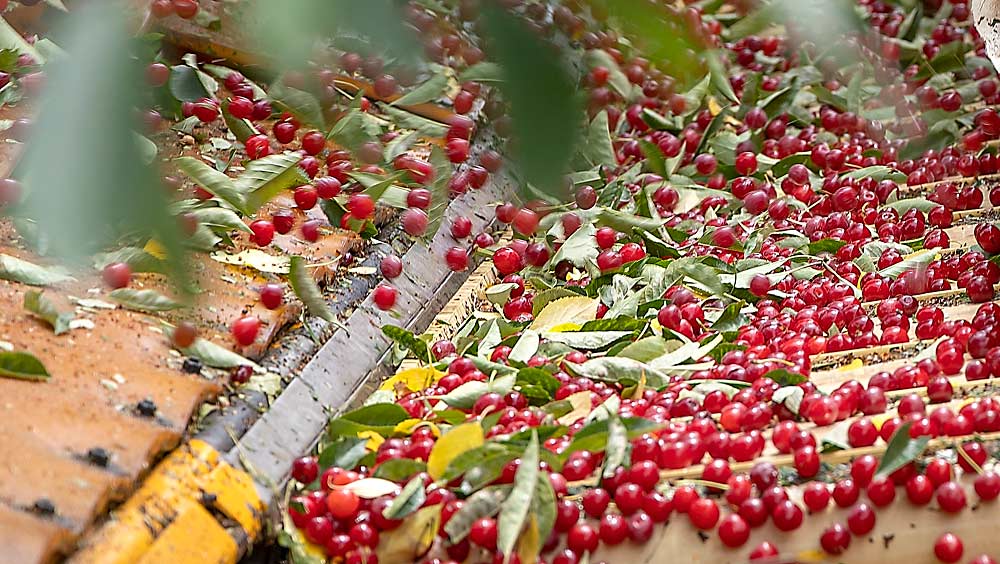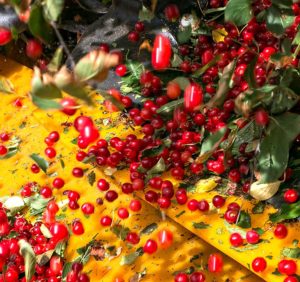
Imported tart cherry products have flooded the domestic market in the past decade, upending the U.S. industry’s competitive balance and leaving it with few options to stem the tide.
U.S. producers have petitioned the federal government for help against foreign competition more than once, with mixed results. But the latest effort just might give them a competitive edge.
The Michigan Cherry Committee, funded by an $89,000 federal grant, is studying the feasibility of using a geographical indication (GI) to brand domestically produced Montmorency tart cherry products. If approved by the U.S. Patent and Trademark Office, a GI label will help differentiate U.S. Montmorency products from international competition, said Julie Gordon, MCC’s executive director and president of the Cherry Marketing Institute.
Attorney and industry consultant Chris Bardenhagen leads the effort. He said a GI logo provides special legal protections, including intellectual property protection, at the international level. It can help crack down on fraud and “put some teeth behind a cease-and-desist letter,” he said.
A geographical indication would also provide international marketing advantages. The U.S. tart cherry industry exports 10 percent to 20 percent of its crop, Gordon said.
Bardenhagen said GI labels have cachet in wealthy countries where consumers are buying more place-based foods. Once a domestic label is approved, the industry can also apply for GI status for marketing within the European Union.
Bardenhagen has spent the past several months preparing the GI application for the patent process. He expects to submit potential logos to the agency by early fall, after wrapping up some consumer research. The approval process could take up to a year. The exact design of the GI logo and exact territory it covers will be decided during the approval process. The industry is seeking a GI for all U.S. tart cherry production, but the Patent and Trademark Office might decide to limit certification to Michigan (which produces more than two-thirds of the national crop), he said.
Clearly differentiating U.S. Montmorency products is crucial, Gordon said. The domestic industry has spent a lot of money researching the health benefits of Montmorency, the main U.S. variety, and started emphasizing its health benefits on product labels — as foreign competition, mainly from Turkey, ramped up. But soon enough, foreign competitors started incorporating “Montmorency” into their promotions, too, even though most of the cherries they grow are Morello-type varieties that might not have the same nutrient content, she said.
“American consumers want to support American farmers, and with lack of country-of-origin labeling in packaged goods, it is nearly impossible for consumers to know where their food is grown,” said Juliette King McAvoy, a Michigan cherry grower and MCC member. “By establishing a geographical indicator for the industry, we can at least be proactive about telling consumers that the product is domestically grown.”
Cheap imports are just one of the many challenges U.S. tart cherry growers have faced in the past decade, others being pests and diseases and rising input and labor costs. In 2009, U.S. production was a record 359 million pounds, while imports totaled 35 million pounds. In 2021, U.S. tart cherry production was 173 million pounds, and imports had reached an “astonishing” 274 million pounds, Gordon said.
With domestic demand now ranging between 440 million and 500 million pounds annually, the U.S industry no longer has the capacity to be the sole supplier. But it still needs a level playing field, she said.
“Domestic sales have exceeded what we can possibly grow,” Gordon said. “We need imports, but not at the rate, or the price, they’re coming in.”
—by Matt Milkovich








Leave A Comment